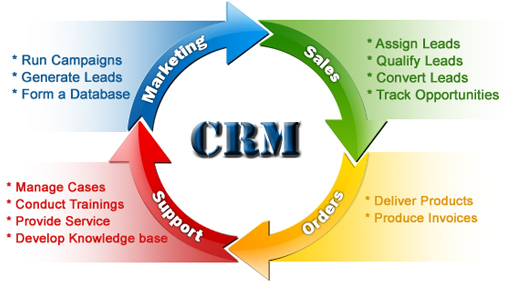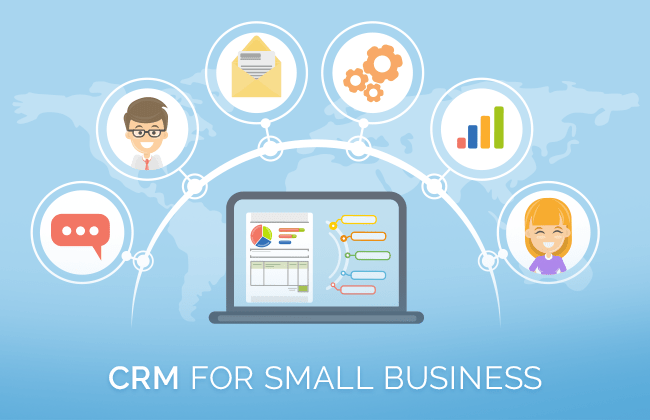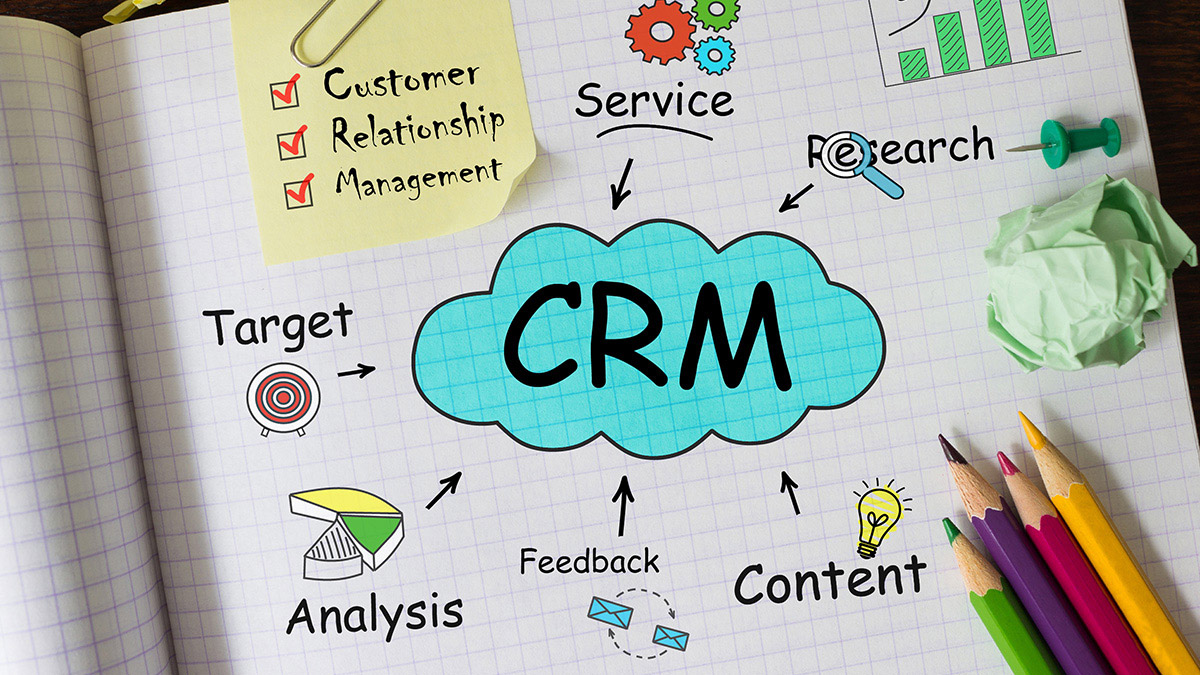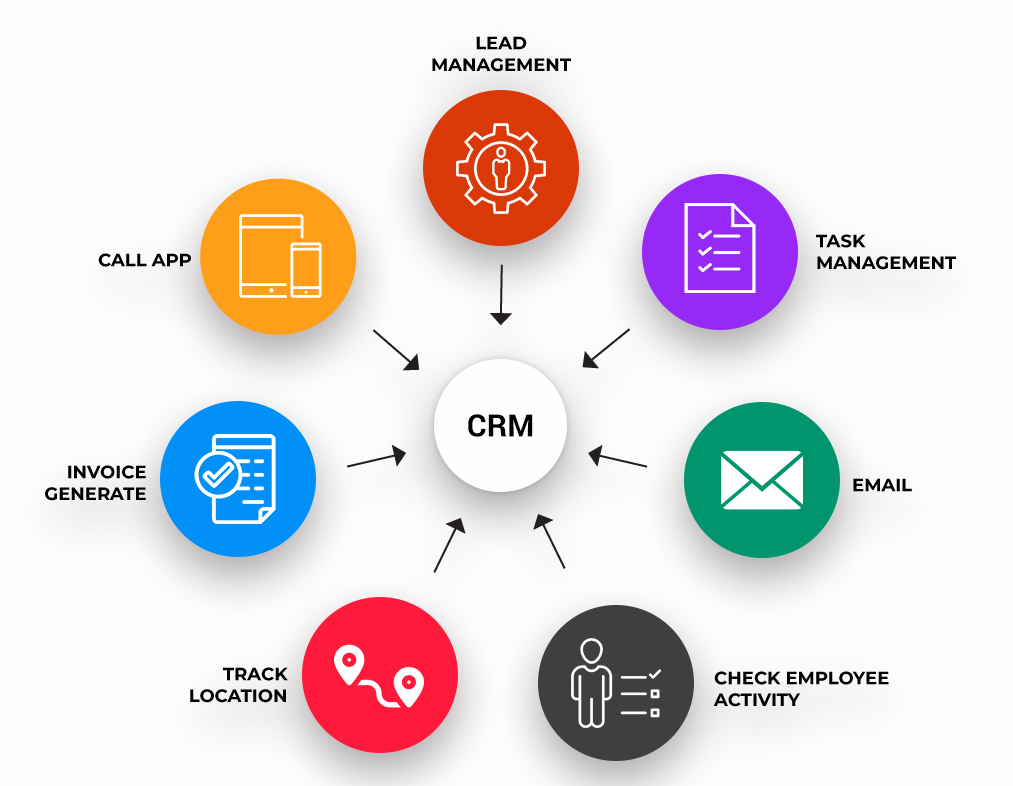
In the bustling world of small business, every advantage counts. You’re juggling a thousand tasks, from product development and marketing to customer service and financial planning. It’s a whirlwind, and sometimes, it feels like you’re just trying to keep your head above water. But what if there was a way to streamline your operations, boost customer satisfaction, and ultimately, drive more revenue? The answer, my friend, lies in the power of Customer Relationship Management (CRM) software.
This comprehensive guide is your roadmap to understanding and leveraging CRM for small business success. We’ll delve into what CRM is, why it’s crucial for your business, how to choose the right system, and how to implement it effectively. Get ready to transform your business from a reactive operation to a proactive, customer-centric powerhouse.
What is CRM? Breaking Down the Basics
CRM, or Customer Relationship Management, is more than just a piece of software. It’s a strategic approach to managing all your company’s interactions and relationships with current and potential customers. Think of it as the central nervous system of your business, connecting all the different departments and functions that touch the customer journey.
At its core, CRM software acts as a centralized database. It stores all the vital information about your customers, including their contact details, purchase history, communication logs, and preferences. This single source of truth allows you to get a 360-degree view of each customer, enabling you to personalize your interactions and provide exceptional service.
Beyond data storage, CRM systems offer a range of features that can revolutionize your business. These include:
- Contact Management: Easily store and manage customer contact information, including names, addresses, phone numbers, and email addresses.
- Lead Management: Track and nurture potential customers (leads) throughout the sales process, from initial contact to conversion.
- Sales Automation: Automate repetitive sales tasks, such as sending follow-up emails and creating sales reports, freeing up your sales team to focus on closing deals.
- Marketing Automation: Automate marketing campaigns, such as email blasts and social media posts, to engage with your target audience and generate leads.
- Customer Service and Support: Manage customer inquiries, resolve issues, and provide excellent customer service through a variety of channels, such as email, phone, and live chat.
- Reporting and Analytics: Generate reports and analyze key performance indicators (KPIs) to track your progress, identify areas for improvement, and make data-driven decisions.
In essence, CRM is about understanding your customers better, building stronger relationships, and ultimately, driving business growth. It’s about putting the customer at the center of everything you do.
Why CRM is Essential for Small Business Success
In the competitive landscape of small business, you can’t afford to lose sight of your customers. CRM is no longer a luxury; it’s a necessity. Here’s why:
1. Enhanced Customer Relationships
Building strong customer relationships is the cornerstone of any successful business. CRM empowers you to:
- Personalize Interactions: By understanding your customers’ needs, preferences, and purchase history, you can tailor your communication and offers to resonate with them on a personal level. This builds trust and loyalty.
- Improve Customer Service: CRM allows you to provide faster, more efficient, and more personalized customer service. You can quickly access customer information, track issues, and resolve problems promptly.
- Foster Loyalty: When customers feel valued and understood, they’re more likely to become loyal advocates for your brand, leading to repeat business and positive word-of-mouth referrals.
2. Increased Sales and Revenue
CRM can significantly boost your sales and revenue by:
- Improving Lead Management: CRM helps you track leads, nurture them through the sales funnel, and identify the most promising prospects. This leads to higher conversion rates and more closed deals.
- Streamlining the Sales Process: Sales automation features, such as automated email follow-ups and task reminders, free up your sales team to focus on selling. This improves efficiency and reduces the time it takes to close deals.
- Identifying Upselling and Cross-selling Opportunities: By analyzing customer purchase history and preferences, CRM can help you identify opportunities to upsell or cross-sell related products or services, increasing your average order value.
3. Improved Efficiency and Productivity
CRM can streamline your business processes and boost productivity by:
- Automating Tasks: CRM automates repetitive tasks, such as data entry, email marketing, and report generation, freeing up your team to focus on more strategic activities.
- Centralizing Information: A centralized database ensures that everyone in your organization has access to the same customer information, eliminating the need for manual data searches and reducing the risk of errors.
- Improving Collaboration: CRM facilitates collaboration between different departments, such as sales, marketing, and customer service, ensuring that everyone is on the same page and working towards the same goals.
4. Data-Driven Decision Making
CRM provides valuable insights into your business performance by:
- Tracking Key Performance Indicators (KPIs): CRM allows you to track important metrics, such as sales revenue, customer acquisition cost, and customer lifetime value, enabling you to monitor your progress and identify areas for improvement.
- Generating Reports and Analytics: CRM generates reports and analytics that provide a comprehensive view of your business performance. This data-driven approach allows you to make informed decisions and optimize your strategies.
- Identifying Trends and Patterns: By analyzing customer data, CRM can help you identify trends and patterns, allowing you to anticipate customer needs and adjust your strategies accordingly.
Choosing the Right CRM for Your Small Business
Selecting the right CRM system is a crucial decision that can significantly impact your business’s success. Here’s a step-by-step guide to help you choose the perfect fit:
1. Assess Your Needs and Goals
Before you start researching CRM systems, take the time to define your specific needs and goals. Ask yourself these questions:
- What are your current pain points? What challenges are you facing in managing your customer relationships, sales, marketing, and customer service?
- What are your business goals? What do you hope to achieve with CRM? Do you want to increase sales, improve customer satisfaction, or streamline your operations?
- What features do you need? Make a list of the essential features your CRM system must have, such as contact management, lead management, sales automation, and reporting.
- What is your budget? Determine how much you’re willing to spend on a CRM system, including software costs, implementation costs, and ongoing maintenance fees.
By clearly defining your needs and goals, you’ll be able to narrow down your options and choose a system that aligns with your business requirements.
2. Research CRM Systems
Once you have a clear understanding of your needs, it’s time to research different CRM systems. Consider these factors:
- Features: Does the system offer the features you need, such as contact management, lead management, sales automation, marketing automation, customer service, and reporting?
- Ease of Use: Is the system user-friendly and easy to navigate? Look for a system with an intuitive interface and clear instructions.
- Scalability: Can the system grow with your business? Choose a system that can accommodate your future needs, such as adding more users or integrating with other applications.
- Integrations: Does the system integrate with other applications you use, such as email marketing platforms, accounting software, and social media platforms?
- Pricing: Consider the pricing structure of different CRM systems. Some systems offer a free version with limited features, while others offer paid plans with more advanced features.
- Customer Support: Does the vendor offer good customer support? Look for a vendor that provides documentation, tutorials, and responsive customer service.
Some popular CRM systems for small businesses include:
- HubSpot CRM: A free CRM with a robust feature set, ideal for businesses of all sizes.
- Zoho CRM: A comprehensive CRM with a wide range of features and integrations, suitable for businesses of all sizes.
- Pipedrive: A sales-focused CRM designed to help sales teams manage their deals and close more sales.
- Salesforce Essentials: A simplified version of Salesforce designed for small businesses.
- Freshsales: A sales CRM with built-in phone and email features.
3. Evaluate and Compare
Create a spreadsheet or a comparison chart to evaluate different CRM systems. Compare the features, pricing, ease of use, and integrations of each system. Narrow down your choices to a few top contenders.
Take advantage of free trials or demos to test the systems and see how they work in practice. Get feedback from your team members who will be using the system. Consider the user experience and how well the system meets your needs.
4. Consider Customization and Integration
Think about the level of customization and integration you need. Some CRM systems are highly customizable, allowing you to tailor the system to your specific business needs. Others offer a wide range of integrations with other applications, such as email marketing platforms, accounting software, and social media platforms.
Choose a system that can be customized to fit your specific workflows and integrates with the tools you already use. This will ensure that your CRM system seamlessly integrates into your existing business processes.
5. Make Your Decision
After evaluating your options, make your final decision. Choose the CRM system that best meets your needs, goals, and budget. Consider the long-term scalability and the vendor’s reputation for customer support. Don’t rush the process. Take your time to carefully evaluate your options to ensure you choose the right CRM system for your business.
Implementing CRM for Maximum Impact
Choosing a CRM is only half the battle. Implementing it effectively is crucial for maximizing its impact on your business. Here’s how to ensure a smooth and successful implementation:
1. Plan Your Implementation
Before you start implementing your CRM, create a detailed implementation plan. This plan should include:
- Define your goals: What do you want to achieve with your CRM implementation?
- Identify your project team: Who will be responsible for the implementation?
- Set a timeline: How long will the implementation take?
- Develop a budget: How much will the implementation cost?
- Outline the steps: What are the specific steps you need to take to implement the CRM?
A well-defined plan will help you stay organized and on track during the implementation process.
2. Data Migration
If you’re migrating from an existing system, you’ll need to transfer your data to the new CRM. This can be a complex process, so it’s important to plan carefully. Here are some things to consider:
- Data cleansing: Clean your data before migrating it to the new CRM. This involves removing duplicate records, correcting errors, and standardizing data formats.
- Data mapping: Map the data fields from your old system to the corresponding fields in the new CRM.
- Data migration tools: Use data migration tools to automate the data transfer process.
- Data validation: After migrating your data, validate it to ensure that it was transferred correctly.
Data migration is a critical step, so take the time to do it right. Consider enlisting the help of a data migration specialist if needed.
3. Training and Onboarding
Provide adequate training to your team members on how to use the new CRM system. This training should cover all the features and functionalities they need to know. Consider these tips:
- Develop training materials: Create user manuals, tutorials, and videos to help your team learn the system.
- Provide hands-on training: Allow your team members to practice using the system under the guidance of a trainer.
- Offer ongoing support: Provide ongoing support to your team members after the initial training.
- Onboarding: If you’re using a new CRM, create a thorough onboarding process to ensure new users are comfortable and understand how to use the system.
The more comfortable your team is with the system, the more likely they are to use it effectively.
4. Customization and Configuration
Customize and configure your CRM system to fit your specific business needs. This may involve:
- Adding custom fields: Add custom fields to store information that is specific to your business.
- Configuring workflows: Configure workflows to automate repetitive tasks.
- Integrating with other applications: Integrate your CRM with other applications, such as email marketing platforms and accounting software.
- Personalize the dashboard: Customize the dashboard to display the information that is most important to you and your team.
The more you customize your CRM, the more value you’ll get out of it.
5. Ongoing Monitoring and Optimization
After implementing your CRM, it’s important to monitor its performance and make adjustments as needed. This involves:
- Tracking key performance indicators (KPIs): Monitor your KPIs to see how well your CRM is performing.
- Analyzing your data: Analyze your data to identify areas for improvement.
- Making adjustments: Make adjustments to your CRM configuration and workflows based on your findings.
- Seeking feedback: Ask your team members for feedback on the system and make improvements based on their suggestions.
CRM is an ongoing process, so be prepared to continually monitor and optimize your system to ensure it’s meeting your needs.
Real-World Examples: CRM Success Stories
Sometimes, the best way to understand the power of CRM is to see it in action. Here are a few examples of how small businesses have leveraged CRM to achieve remarkable results:
Example 1: The Local Bakery
A local bakery, struggling to keep track of customer preferences and manage its loyalty program, implemented a CRM system. They used the CRM to track customer orders, birthdays, and dietary restrictions. They then used this data to:
- Send personalized birthday greetings with special offers, leading to a significant increase in repeat business.
- Create targeted email campaigns for new product launches, resulting in higher sales.
- Improve customer service by quickly accessing customer information and addressing any concerns.
The bakery saw a 20% increase in customer retention and a 15% increase in overall revenue within the first year.
Example 2: The Boutique Consulting Firm
A small consulting firm specializing in marketing strategies was having trouble managing leads and tracking the progress of their sales pipeline. They implemented a CRM to:
- Manage leads effectively, ensuring no potential clients slipped through the cracks.
- Automate follow-up emails and appointment scheduling, freeing up their sales team.
- Gain insights into the sales process, identifying areas for improvement.
As a result, the firm saw a 25% increase in sales conversions and a 10% reduction in the sales cycle length.
Example 3: The Online Retailer
An online retailer selling handcrafted goods was facing challenges in providing personalized customer service and managing customer inquiries. They implemented a CRM to:
- Provide a centralized view of customer interactions, including purchase history and support tickets.
- Automate responses to frequently asked questions, improving customer service efficiency.
- Personalize product recommendations based on customer purchase history, increasing sales.
The retailer experienced a 18% increase in customer satisfaction scores and a 12% increase in average order value.
These examples demonstrate the tangible benefits of CRM for small businesses. By implementing the right system and following best practices, you can achieve similar results and propel your business to new heights.
Common Mistakes to Avoid When Implementing CRM
While CRM offers tremendous benefits, it’s easy to make mistakes during the implementation process. Avoiding these pitfalls can ensure a smoother transition and maximize your chances of success:
1. Not Defining Clear Goals
One of the most common mistakes is failing to define clear goals before implementing CRM. Without clear goals, it’s difficult to choose the right system, customize it effectively, and measure your success. Before you start, ask yourself:
- What do you want to achieve with CRM?
- What are your key performance indicators (KPIs)?
- How will you measure your success?
By setting clear goals, you’ll have a roadmap for your implementation and be able to track your progress effectively.
2. Choosing the Wrong System
Choosing a CRM system that doesn’t fit your business needs is a recipe for disaster. Take the time to research different systems, evaluate their features, and compare their pricing. Consider these factors:
- Features: Does the system offer the features you need?
- Ease of Use: Is the system user-friendly?
- Scalability: Can the system grow with your business?
- Integrations: Does the system integrate with other applications you use?
- Pricing: Is the pricing affordable for your budget?
Don’t choose a system based on price alone. Consider the long-term value and how well it meets your business needs.
3. Not Getting Buy-In From Your Team
If your team isn’t on board with the new CRM system, it’s unlikely to be successful. Before implementation, involve your team in the decision-making process. Get their feedback on the system and address their concerns. During implementation, provide adequate training and support. Make sure everyone understands the benefits of CRM and how it will improve their work.
4. Poor Data Migration
Data migration is a critical step, and poor data migration can lead to a mess. Before migrating your data, clean it, map it, and validate it. Consider these tips:
- Clean your data: Remove duplicate records, correct errors, and standardize data formats.
- Map your data: Map the data fields from your old system to the corresponding fields in the new CRM.
- Validate your data: After migrating your data, validate it to ensure that it was transferred correctly.
If necessary, consider hiring a data migration specialist to help with this process.
5. Lack of Training and Support
Without adequate training and support, your team won’t be able to use the CRM system effectively. Provide comprehensive training on all the features and functionalities of the system. Offer ongoing support to address any questions or concerns. Consider these tips:
- Develop training materials: Create user manuals, tutorials, and videos.
- Provide hands-on training: Allow your team members to practice using the system.
- Offer ongoing support: Provide ongoing support to your team members.
The more comfortable your team is with the system, the more likely they are to use it effectively.
6. Not Customizing the System
A generic CRM system may not meet your specific business needs. Take the time to customize the system to fit your workflows and processes. This may involve:
- Adding custom fields.
- Configuring workflows.
- Integrating with other applications.
- Personalizing the dashboard.
The more you customize your CRM, the more value you’ll get out of it.
7. Neglecting Ongoing Monitoring and Optimization
CRM is not a set-it-and-forget-it solution. It requires ongoing monitoring and optimization. Track your KPIs, analyze your data, and make adjustments as needed. Consider these tips:
- Track your KPIs: Monitor your KPIs to see how well your CRM is performing.
- Analyze your data: Analyze your data to identify areas for improvement.
- Make adjustments: Make adjustments to your CRM configuration and workflows based on your findings.
- Seek feedback: Ask your team members for feedback on the system.
By continuously monitoring and optimizing your CRM, you can ensure that it’s meeting your needs and delivering the desired results.
The Future of CRM for Small Businesses
The world of CRM is constantly evolving, with new technologies and trends emerging all the time. Staying informed about these trends can help you stay ahead of the curve and leverage the latest advancements to your advantage.
1. Artificial Intelligence (AI) and Machine Learning (ML)
AI and ML are transforming the CRM landscape. These technologies can automate tasks, provide personalized recommendations, and predict customer behavior. For example:
- Chatbots: AI-powered chatbots can handle customer inquiries, freeing up your team to focus on more complex issues.
- Predictive Analytics: ML can analyze customer data to predict future behavior, such as which customers are likely to churn or which products they’re likely to purchase.
- Personalized Recommendations: AI can provide personalized product recommendations, increasing sales and customer satisfaction.
As AI and ML become more sophisticated, they’ll play an increasingly important role in CRM, helping small businesses provide better customer experiences and drive more revenue.
2. Mobile CRM
Mobile CRM allows you to access your CRM data and manage your customer relationships on the go. This is particularly important for small businesses with sales teams or customer service representatives who spend a lot of time out in the field. Mobile CRM offers several benefits:
- Increased Productivity: Sales reps can access customer information, update leads, and close deals from anywhere, at any time.
- Improved Collaboration: Mobile CRM allows team members to stay connected and share information in real-time.
- Enhanced Customer Service: Customer service reps can quickly access customer information and resolve issues on the spot.
As mobile technology continues to advance, mobile CRM will become even more essential for small businesses.
3. Social CRM
Social CRM integrates social media with your CRM system. This allows you to monitor social media conversations, engage with customers, and build your brand. Social CRM offers several benefits:
- Improved Customer Service: You can respond to customer inquiries and resolve issues on social media.
- Enhanced Brand Awareness: You can build your brand and engage with your target audience on social media.
- Better Customer Insights: You can gain insights into customer preferences and behaviors by monitoring social media conversations.
Social CRM is becoming increasingly important as social media becomes a primary channel for customer interaction.
4. Integration with Other Technologies
CRM systems are increasingly integrating with other technologies, such as:
- Email Marketing Platforms: Integrate your CRM with your email marketing platform to automate email campaigns and personalize your messaging.
- E-commerce Platforms: Integrate your CRM with your e-commerce platform to track customer purchases and personalize product recommendations.
- Accounting Software: Integrate your CRM with your accounting software to track invoices and payments.
These integrations allow you to streamline your business processes and get a more comprehensive view of your customers.
Final Thoughts: Embrace CRM for Sustainable Growth
In today’s fast-paced business environment, CRM is no longer a luxury; it’s a necessity for small businesses that want to thrive. By embracing CRM, you can build stronger customer relationships, increase sales and revenue, improve efficiency and productivity, and make data-driven decisions.
This comprehensive guide has provided you with the knowledge and tools you need to get started with CRM. Remember to:
- Assess your needs and goals.
- Research and choose the right CRM system.
- Plan and implement the system effectively.
- Provide training and support to your team.
- Continuously monitor and optimize your CRM.
By following these steps, you can unlock the full potential of CRM and achieve sustainable growth for your small business. Don’t wait – start your CRM journey today and watch your business flourish.


